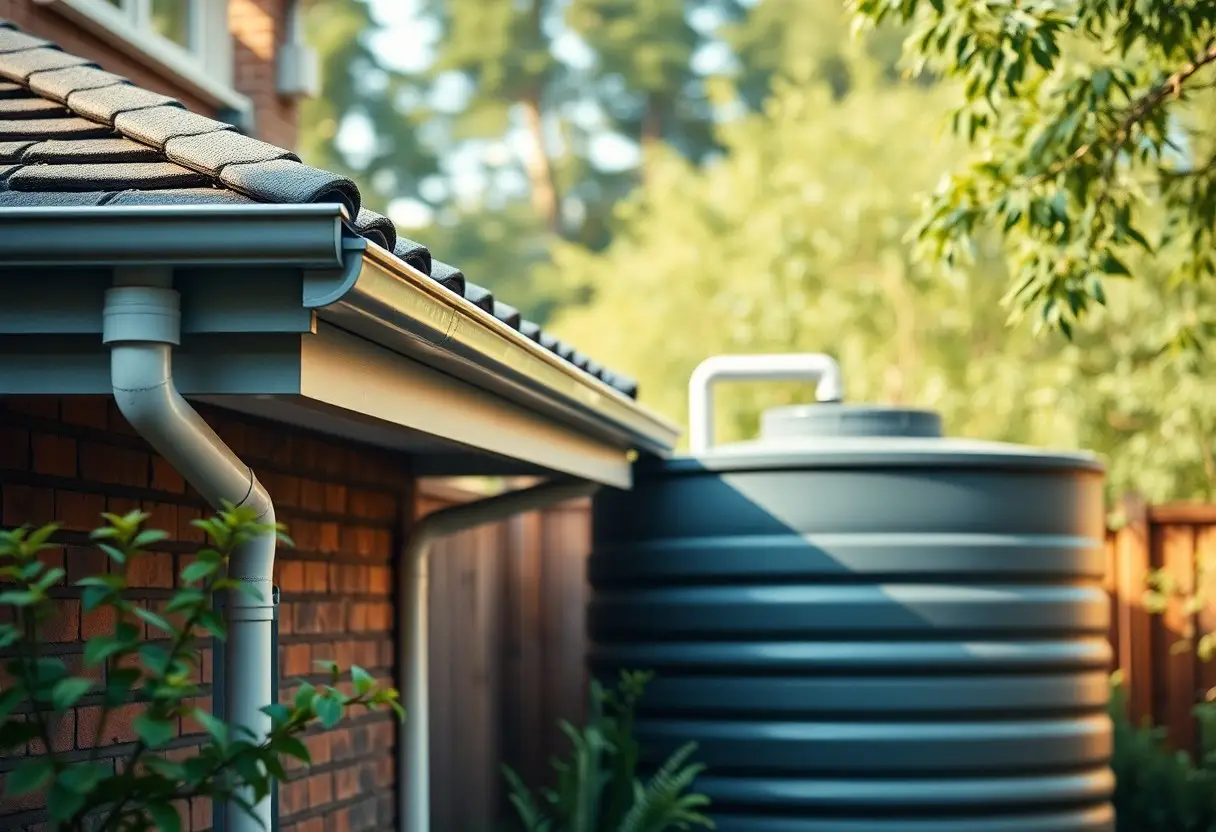You can protect your home and landscape this fall by taking proactive measures against gutter clogs. Clogged gutters can lead to serious water damage, affecting your roof, siding, and foundation. By implementing a few simple steps, you can significantly reduce the risk of blockages caused by falling leaves and debris. In this post, you’ll learn the top four strategies to keep your gutters functioning efficiently throughout the autumn season, ensuring your home remains safe and dry.
Key Takeaways:
- Regularly inspect and clean your gutters to remove debris, leaves, and dirt that can lead to clogs.
- Install gutter guards or screens to provide an additional layer of protection against accumulating debris.
- Ensure downspouts are directed away from your home’s foundation to prevent overflow and water damage.
Understanding Gutter Clogs
Your gutters play a vital role in protecting your home from water damage, but they can easily become clogged with leaves, dirt, and debris. When these obstructions accumulate, they obstruct the flow of rainwater, leading to overflows that can damage your roof, walls, and foundation. Understanding how clogs form is important for maintaining your gutter system effectively throughout the fall season.
Common Causes of Clogs
Between numerous factors, several typically lead to gutter clogs, including:
- Leaves falling from trees
- Twigs and branches accumulating over time
- Granules from your roofing materials
- Bird nests or insect homes
Seasonal Factors for Fall
On top of the usual debris, the fall season brings unique challenges to your gutter system. As trees shed their leaves, increasing amounts of organic material enter your gutters. This accumulation can make it easier for water to back up and potentially freeze in colder weather. Understanding these seasonal factors is important to keeping your gutters clear.
- Heavy rainfall during fall storms
- Changing temperatures affecting water flow
- Debris build-up from various trees
Plus, being aware of the specific challenges that fall presents will enhance your gutter maintenance. You must act proactively during this season, as clogs can lead to unexpected and expensive issues down the line. The interaction of heavy rain, dropping leaves, and temperature shifts can create significant problems for your gutters if left unaddressed. Stay vigilant and ensure your home is well protected as the seasons change. Perceiving your gutter’s condition regularly ensures you avoid future complications.

Step 1: Regular Gutter Cleaning
Some homeowners often overlook the importance of regular gutter cleaning, especially in the fall when leaves and debris tend to accumulate. By prioritizing this task, you help ensure that rainwater flows freely through your gutters, preventing blockages that can lead to flooding, foundation damage, or roof issues. Routinely cleaning your gutters allows you to maintain the integrity of your home and protect it from costly repairs down the line.
Tools Needed
After you decide to tackle gutter cleaning, gather the necessary tools to get the job done effectively. You will need a sturdy ladder, a scoop (like a trowel or gutter scoop), a bucket or bag for collecting debris, gloves for protection, and a hose for rinsing. Having these tools ready will make the cleaning process smoother and more efficient.
Best Practices for Cleaning
About the best practices for cleaning your gutters, it’s important to approach the task methodically. Start by using your ladder safely, ensuring it is stable on level ground. Wear your gloves while scooping out debris, and don’t forget to clear downspouts as well. Always rinse out the gutter system with water afterward to check for any lingering blockages. Regularly inspecting your gutters twice a year, especially in the fall, can significantly extend the lifespan of your gutter system.
Also, take special care to maintain three points of contact with the ladder at all times for your safety. If you encounter stubborn clogs, using a plumber’s snake can be effective in dislodging debris without risk of damaging your gutters. Furthermore, make it a point to wear non-slip shoes to avoid any accidents. Following these practices not only ensures a thorough cleaning but also promotes your safety while you work at heights.
Step 2: Installing Gutter Guards
Keep your gutters free from debris and clogs by installing gutter guards. These protective coverings act as a barrier against leaves, twigs, and other materials that can create blockages. By utilizing gutter guards, you’ll enhance the efficiency of your gutter system and reduce maintenance efforts significantly.
Types of Gutter Guards
Along with several options on the market, you can choose from various types of gutter guards, each designed to meet different needs:
| Mesh Guards | Fine mesh prevents even small debris from entering. |
| Surface Tension Guards | Water adheres to the guard, allowing it to flow in, but keeps debris out. |
| Foam Inserts | These fit directly into gutters, blocking debris while allowing water to flow. |
| Reverse Curve Guards | Designed to guide rainwater around a curve into the gutter. |
| Plastic Guards | Budget-friendly while providing basic protection. |
After selecting the right type, installation is vital for optimal performance.
Benefits of Gutter Guards
About gutter guards, they offer multiple advantages that can greatly benefit your home. They minimize the need for frequent cleaning, reduce the risk of water damage, and improve the overall function of your gutter system.
Gutter guards serve as an effective line of defense against possible water damage to your foundation, siding, and landscaping. By ensuring that rainwater flows freely, you can avoid costly repairs that arise from neglected gutters. Additionally, they significantly decrease the likelihood of pest infestations and can even prolong the lifespan of your gutter system. Investing in gutter guards is a proactive decision that protects your home from various environmental factors, giving you peace of mind as the seasons change.
Step 3: Ensuring Proper Water Flow
Not all gutters are created equal, and ensuring proper water flow is crucial for preventing clogs. You should inspect your gutters for any blockages and ensure that they are clear to allow water to flow freely. Additionally, regularly check the pitch of your gutters; if they are not sloped correctly, water could pool, leading to potential damage or clogs.
Downspout Maintenance
One of the key components of your gutter system is the downspout. You need to ensure that it remains unobstructed and clear from debris. Regularly check for leaves, twigs, and other obstructions that can prevent water from flowing efficiently away from your home.
Slope and Pitch Adjustments
To keep water moving smoothly through your gutters, it’s vital to maintain the correct slope and pitch. Your gutters should slope towards the downspouts at a gradient of 1-2 inches for every 10 feet of run. This ensures that water drains effectively, minimizing the risk of clogs.
Hence, improper slope and pitch can lead to stagnant water, promoting mold growth and creating an inviting environment for pests. You should inspect your gutters periodically, making necessary adjustments if you notice water pooling or overflowing. A consistent slope can alleviate potential clogs, thereby protecting your home from water damage and costly repairs. Taking time to ensure your gutters are correctly pitched is a proactive step towards safeguarding your property.

Step 4: Landscaping Considerations
Many homeowners overlook how their landscaping decisions can impact gutter health. By being mindful of your garden layout and the placement of trees, you can significantly reduce the chances of gutter clogs this fall. Strategic planting not only enhances your home’s aesthetic but also supports the functionality of your gutters.
Strategic Planting
Considerations for plant placement should prioritize distances from your roofline and gutters. Opt for native plants that require less maintenance and won’t shed excessive leaves or debris. Additionally, positioning larger trees further away from your home can prevent fallen branches and leaves from accumulating around your gutters.
Maintenance of Nearby Trees
Before the fall season, it’s wise to assess the health and positioning of nearby trees. Regularly trimming branches and removing dead or decaying limbs can help minimize falling debris that clogs gutters. Additionally, ensure your trees are healthy to avoid sudden breakage during storms.
But maintaining the trees near your home goes beyond simple aesthetics; it’s about safeguarding your gutters.Overhanging branches can battle the wind and cause hazards, while dead or diseased trees are a risk for spontaneous damage. By keeping these trees healthy and trimmed, you will reduce falling leaves and branches, ensuring your gutters remain clear and function as intended. Prioritize tree health to avert any potential gutter issues this fall.
Other Preventative Measures
All homeowners should consider implementing additional strategies to ensure effective gutter clog prevention this fall. Besides regular cleaning, opt for protective screens or filters that can catch leaves and debris before they enter your gutters. It’s also important to trim nearby trees and foliage to prevent overhanging branches from contributing to clogs. By taking these measures, you can greatly enhance the longevity and functionality of your gutter system, ultimately protecting your home from water damage.
Regular Inspections
An important part of preventing gutter clogs is conducting regular inspections. You should check your gutters at least twice during the fall season, especially after heavy winds or storms. Look for signs of damage, such as holes or sagging areas, and ensure that water flows freely through the gutters and downspouts. By staying proactive in your observation, you can mitigate potential problems before they escalate into costly repairs.
Professional Services
About enlisting professional services can be a wise investment for your gutter care. Professionals possess the expertise and tools necessary to clean and maintain your gutters effectively, ensuring they function at peak performance.
Consequently, hiring a professional service can save you time and prevent the dangers associated with climbing ladders or handling risky situations. These experts can identify hidden issues that may not be immediately apparent to the untrained eye. Additionally, regular professional cleanings can extend your gutter’s lifespan and prevent potential water damage to your home’s foundation. Investing in these services ultimately provides peace of mind knowing that your gutters are in the hands of skilled professionals.
What Are the Key Similarities Between Effective Gutter Clog Prevention Steps?
Effective gutter clog prevention hinges on several common factors. Regular maintenance, such as cleaning and inspecting gutters, is vital. Additionally, using gutter covers can minimize debris accumulation. These collective measures exemplify effective strategies to prevent gutter clogs, ensuring proper water flow and protecting your home’s foundation from potential damage.
Conclusion
The top four steps for effective gutter clog prevention this fall can significantly impact the longevity and functionality of your home’s drainage system. By regularly inspecting your gutters, utilizing high-quality guards, trimming overhanging branches, and ensuring proper downspout routing, you can safeguard your home against potential water damage. Taking these proactive measures will help you maintain your gutter system and protect your property, allowing you to enjoy the season without worry.
FAQ
Q: What are the key steps for preventing gutter clogs this fall?
A: The top four steps for effective gutter clog prevention during the fall season include regular cleaning, installing gutter guards, ensuring proper downspout extension, and inspecting your gutters for damage. Regularly cleaning your gutters of leaves, twigs, and debris will help maintain flow. Gutter guards can act as a barrier to prevent large debris from entering. Properly extending downspouts will ensure water is directed away from your foundation, and regular inspections will help you catch any potential issues early.
Q: How often should I clean my gutters during the fall?
A: It is advisable to clean your gutters at least twice during the fall—once at the beginning of the season and again after most of the leaves have fallen. If you have a lot of trees around your property, you may need to check and clean them more frequently. Paying attention to the forecast and the peak leaf-fall times in your area can help schedule these cleanings effectively.
Q: Can I install gutter guards myself, or should I hire a professional?
A: While installing gutter guards can be a DIY project for those who are comfortable with tools and ladders, it may be beneficial to hire a professional for complex roof structures or if you’re unsure about safety. Professionals have the experience and expertise to choose the right type of gutter guard and properly install them, ensuring they function as intended and providing long-term clog prevention.


